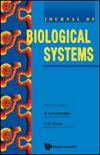机器学习和深度学习技术在心血管疾病预测中的机遇和挑战:系统综述
IF 1.5
4区 数学
Q3 BIOLOGY
引用次数: 0
摘要
医疗保健确实是每个人生活中不可避免的一部分。最近几天,大多数死亡都是由非传染性疾病造成的。尽管在医学诊断方面取得了重大进展,但心血管疾病仍然是全世界最主要的死亡原因。随着最近机器学习(ML)和深度学习(DL)技术的创新,临床领域,特别是心脏病学领域出现了巨大的增长。一些ML和DL算法对预测心血管疾病很有用。这些算法的预测能力有望用于各种心血管疾病,如冠状动脉疾病、心律失常、心力衰竭等。我们还回顾了心脏病期间肺部的相互作用。通过对不同数据集的ML和DL模型的研究,分析了各种策略的性能。在这项研究中,我们重点分析了各种ML和DL算法来诊断心血管疾病。在本文中,我们也提出了心力衰竭的检测和各种危险因素的详细分析。本文可能有助于研究人员研究各种算法,并为其数据集找到最优算法。本文章由计算机程序翻译,如有差异,请以英文原文为准。
OPPORTUNITIES AND CHALLENGES OF MACHINE LEARNING AND DEEP LEARNING TECHNIQUES IN CARDIOVASCULAR DISEASE PREDICTION: A SYSTEMATIC REVIEW
Healthcare is indeed an inevitable part of life for everyone. In recent days, most of the deaths have been happening because of noncommunicable diseases. Despite the significant advancements in medical diagnosis, cardiovascular diseases are still the most prominent cause of mortality worldwide. With recent innovations in Machine Learning (ML) and Deep Learning (DL) techniques, there has been an enormous surge in the clinical field, especially in cardiology. Several ML and DL algorithms are useful for predicting cardiovascular diseases. The predictive capability of these algorithms is promising for various cardiovascular diseases like coronary artery disease, arrhythmia, heart failure, and others. We also review the lung interactions during heart disease. After the study of various ML and DL models with different datasets, the performance of the various strategies is analyzed. In this study, we focused on the analysis of various ML and DL algorithms to diagnose cardiovascular disease. In this paper, we also presented a detailed analysis of heart failure detection and various risk factors. This paper may be helpful to researchers in studying various algorithms and finding an optimal algorithm for their dataset.
求助全文
通过发布文献求助,成功后即可免费获取论文全文。
去求助
来源期刊
CiteScore
2.80
自引率
12.50%
发文量
31
审稿时长
1 months
期刊介绍:
The Journal of Biological Systems is published quarterly. The goal of the Journal is to promote interdisciplinary approaches in Biology and in Medicine, and the study of biological situations with a variety of tools, including mathematical and general systems methods. The Journal solicits original research papers and survey articles in areas that include (but are not limited to):
Complex systems studies; isomorphies; nonlinear dynamics; entropy; mathematical tools and systems theories with applications in Biology and Medicine.
Interdisciplinary approaches in Biology and Medicine; transfer of methods from one discipline to another; integration of biological levels, from atomic to molecular, macromolecular, cellular, and organic levels; animal biology; plant biology.
Environmental studies; relationships between individuals, populations, communities and ecosystems; bioeconomics, management of renewable resources; hierarchy theory; integration of spatial and time scales.
Evolutionary biology; co-evolutions; genetics and evolution; branching processes and phyllotaxis.
Medical systems; physiology; cardiac modeling; computer models in Medicine; cancer research; epidemiology.
Numerical simulations and computations; numerical study and analysis of biological data.
Epistemology; history of science.
The journal will also publish book reviews.

 求助内容:
求助内容: 应助结果提醒方式:
应助结果提醒方式:


